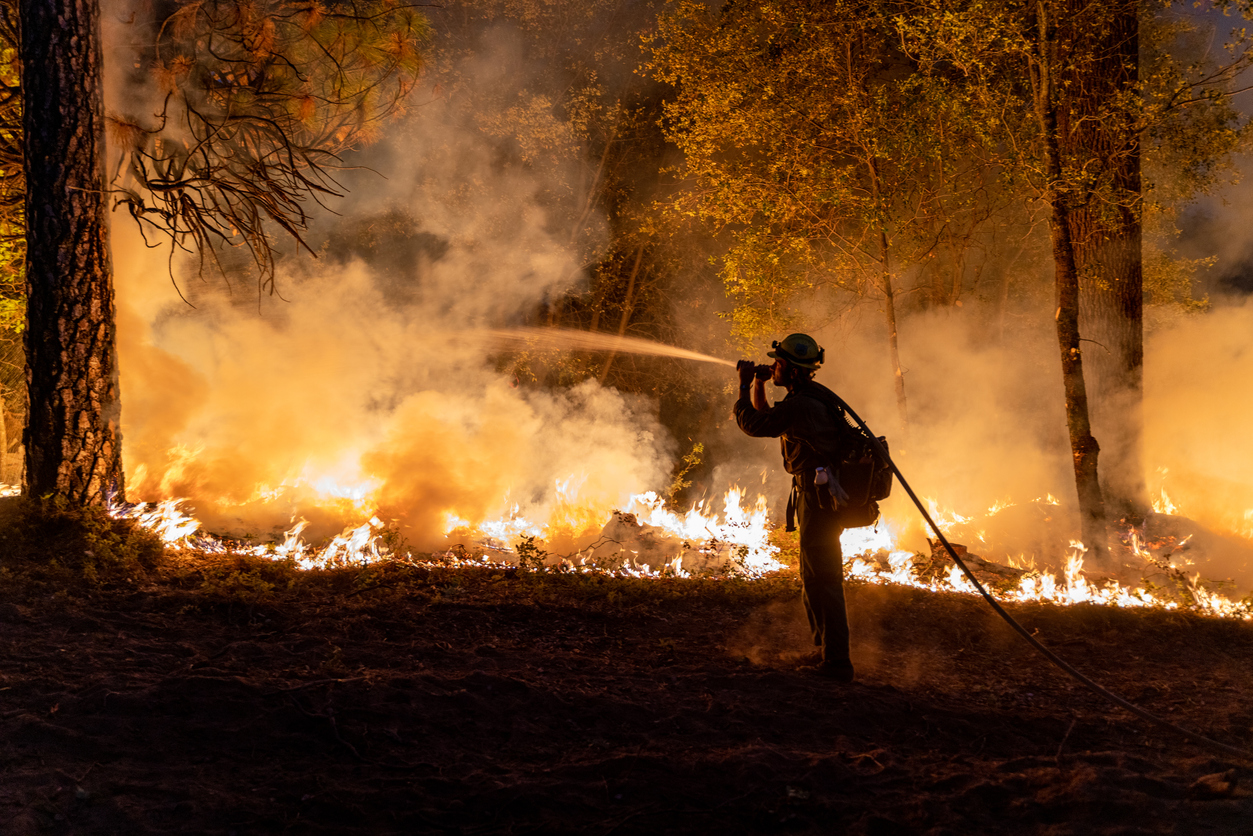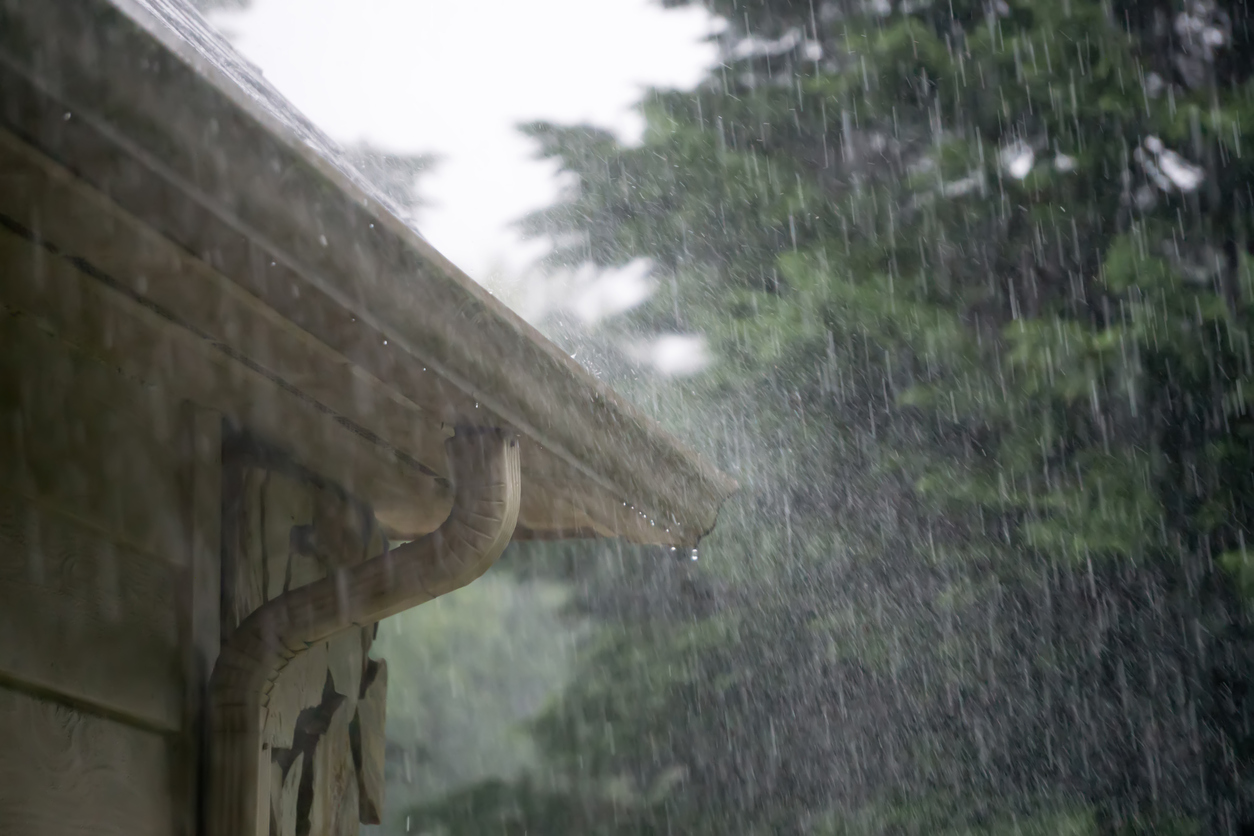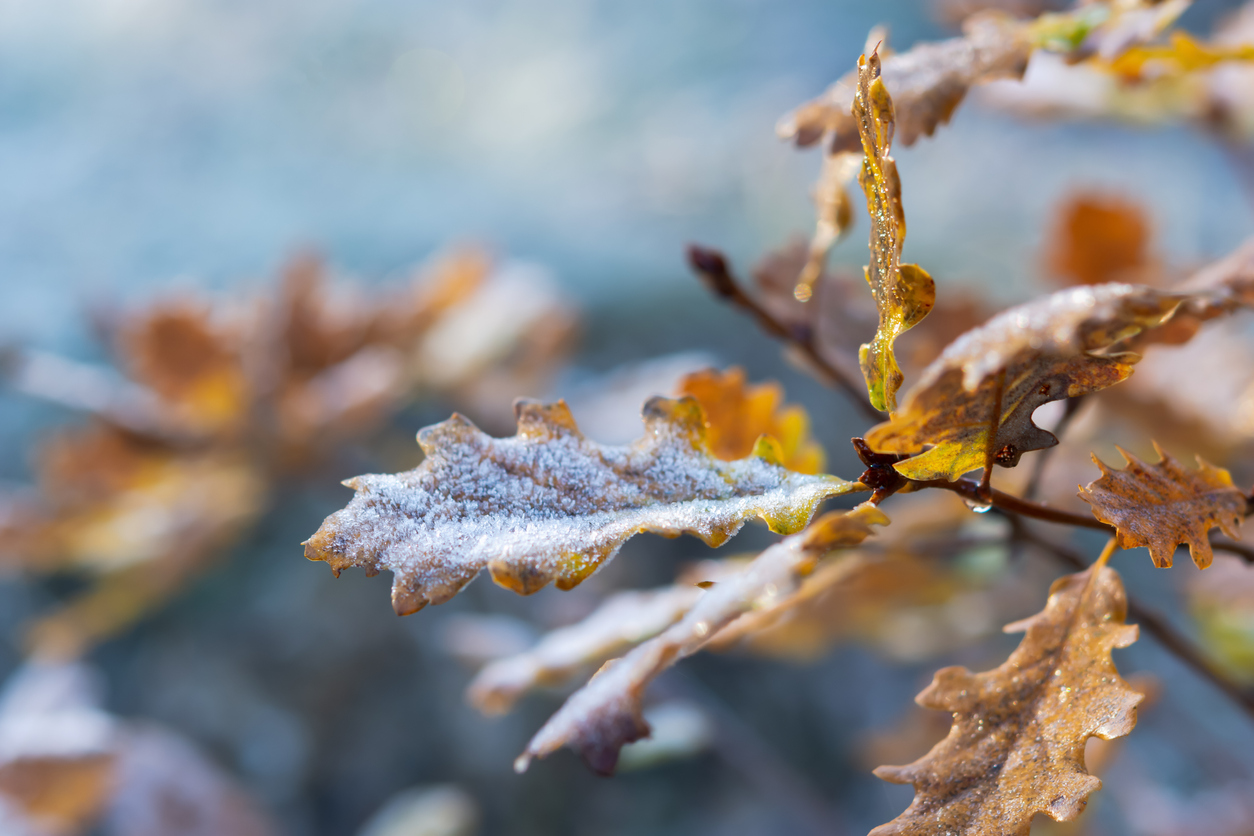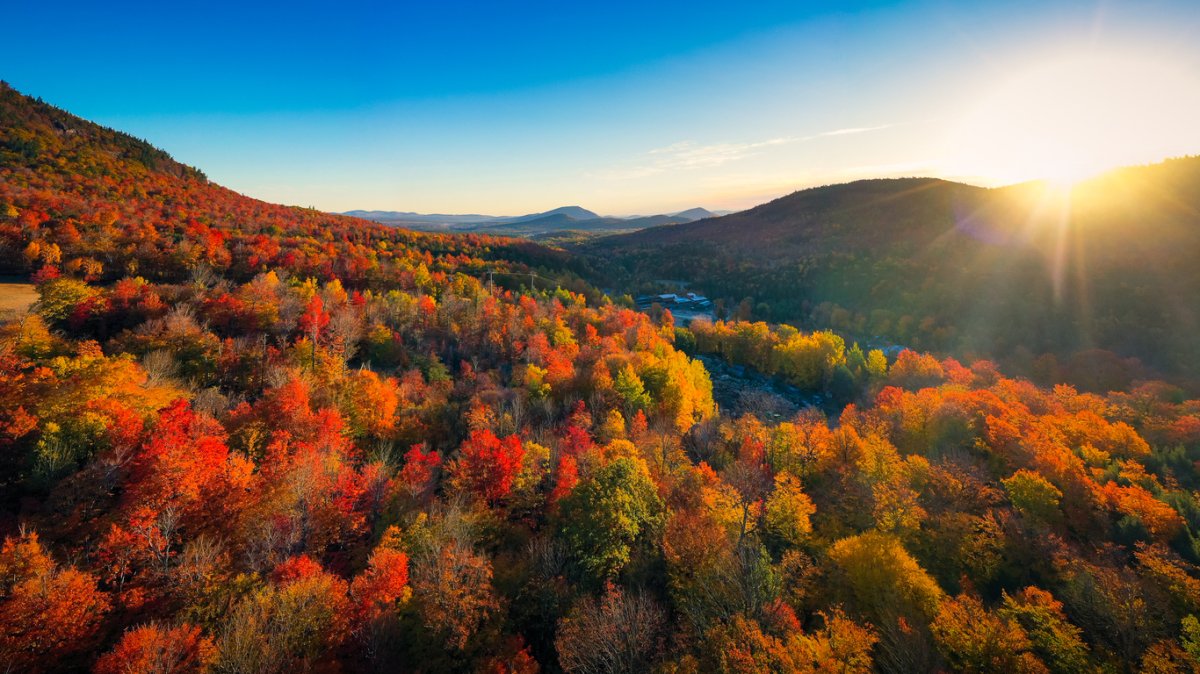We may earn revenue from the products available on this page and participate in affiliate programs. Learn More ›
Many areas of the country had some strange weather this year. Forest fires, unexpected cold snaps, the late arrival of summer, and other weird weather may have altered the usual fall patterns we expect.
Lots of people love the dramatic change in fall foliage, when the colors shift from green to bright yellow, burnt orange, and crimson. Whether you’re planning a trip to take in the dynamic hues of the season, or looking to forage for some fall craft projects, understanding the factors that may have altered the arrival of autumn and consulting the latest fall foliage map of the U.S. will help you make the most of your travels.
RELATED: 16 Leaf-Raking Lessons No One Ever Taught You
The Science Behind Autumn Colors
In photosynthesis, plants convert light into chemical energy. That process involves a pigment in the tree leaves called chlorophyll, which is what makes leaves green.
As autumn days grow shorter, temperatures cool down, and there’s less sunlight, chlorophyll production slows down then stops as the tree prepares to go dormant for the winter. Without chlorophyll, different pigments take over the leaves. Carotene and xanthophyll turn leaves yellow and orange, where anthocyanins display the vivid red colors.
Unfortunately, these fall foliage colors can be affected by several factors.
RELATED: 12 Things an Arborist Wishes You Knew
Forest Fires

According to the United States Environmental Protection Agency, there has been an average of 70,000 wildfires per year in the country. As a result, the National Interagency Fire Center estimates we lost more than 7.1 million acres in 2021 alone. On top of the tree loss, heavy smoke and other air pollutants can affect trees outside of a fire area too, coating their leaves and causing them to turn yellow or brown too early.
As a natural response, some tree species in the eastern United States are starting to migrate north and west, as a way to avoid fire damage.
RELATED: How to Protect Your Property From Wildfires
Drought
Soil moisture can help make fall colors pop. The best colors come about in areas where the soil has been sufficiently moist throughout the year. Areas that experience severe summer drought or even a late spring, often have a delayed onset of color transformation by as much as a few weeks.
When areas experience below-normal or inadequate precipitation, trees and shrubs are stressed and can lose their leaves early, which can reduce the amount of overall color at the peak of the season.
RELATED: Weathering Water Restrictions: How to Save Your Landscape From the Effects of Drought
Excessive Precipitation

Too little water impacts when leaves change color, but too much water isn’t great either. With increased precipitation comes more cloud cover—reducing light levels and prompting a lower photosynthesis rate. Less photosynthesis decreases a tree’s sugar reserves, which are needed to stimulate the production of rich fall foliage pigments.
Flooding
Storms that lead to flooding bring way too much water and not enough oxygen to tree roots, stressing out the tree and reducing fall coloration. Trees can bounce back providing they aren’t under water too long. Two or three days of flooding may not make much difference to fall foliage, but a week or more can cause tremendous injury to trees—if they survive.
Freezes and Other Climate Change Events

Climate change brings along all of the above dangers, but it encompasses anything that creates long-term shifts in weather patterns or temperatures. Deep freezes and intense heat alter precipitation, wind, and cloud cover—all of which can disrupt the brilliant tones of typical fall foliage.
One impact of climate change is the confusion it causes to a tree’s physiology. Deciduous trees in a given area tend to change color at the same time of the year. Climate change may make the transformation less synchronized and more sporadic, and each tree might change for different lengths of time.
RELATED: How to Protect Plants From Frost
The Arrival of Fall Foliage Across the Country

Given the peculiar weather across the country this year, it’s safe to say that autumn colors may arrive a little off schedule. However, you can use Smoky Mountains Fall Foliage Prediction Map to estimate when the colors will change this autumn. The map covers the spectrum from no change in color to peak season, and when an area is past its prime.
Select the week you want to travel using the slider along the bottom of the map, and you’ll see the anticipated fall foliage in the continental United States.


